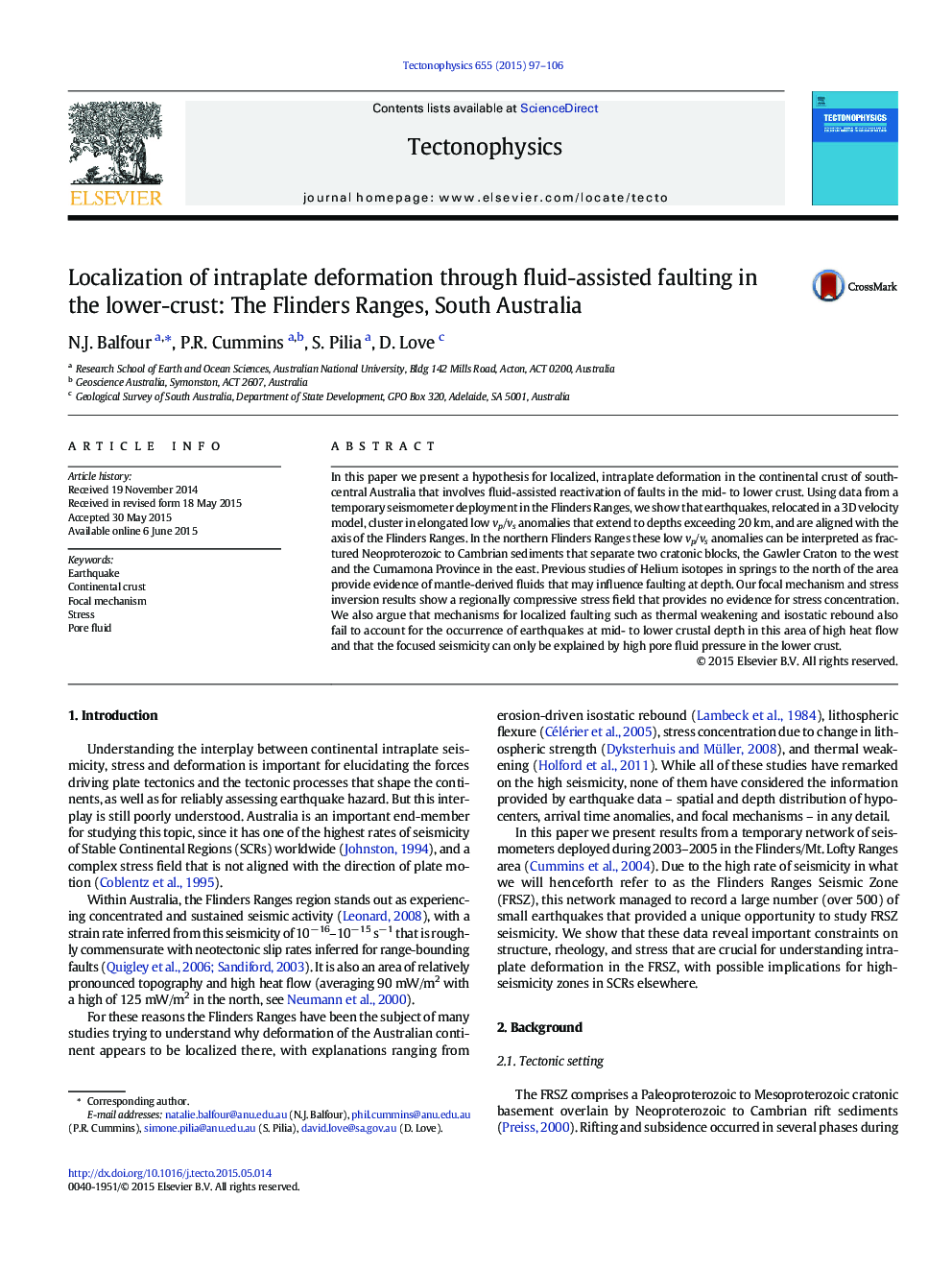| Article ID | Journal | Published Year | Pages | File Type |
|---|---|---|---|---|
| 4691583 | Tectonophysics | 2015 | 10 Pages |
•We propose a new mechanism for intraplate deformation in Australia.•High intraplate seismicity in the Flinders Ranges occurs via uid-assisted faulting.•Mantle-sourced CO2 in nearby springs is consistent with uid-assisted faulting.•Previously proposed crustal shortening mechanisms disagree with the earthquake data.•Lower crustal seismicity in SCR paleorifts elsewhere may involve a similar mechanism.
In this paper we present a hypothesis for localized, intraplate deformation in the continental crust of south-central Australia that involves fluid-assisted reactivation of faults in the mid- to lower crust. Using data from a temporary seismometer deployment in the Flinders Ranges, we show that earthquakes, relocated in a 3D velocity model, cluster in elongated low vp/vs anomalies that extend to depths exceeding 20 km, and are aligned with the axis of the Flinders Ranges. In the northern Flinders Ranges these low vp/vs anomalies can be interpreted as fractured Neoproterozoic to Cambrian sediments that separate two cratonic blocks, the Gawler Craton to the west and the Curnamona Province in the east. Previous studies of Helium isotopes in springs to the north of the area provide evidence of mantle-derived fluids that may influence faulting at depth. Our focal mechanism and stress inversion results show a regionally compressive stress field that provides no evidence for stress concentration. We also argue that mechanisms for localized faulting such as thermal weakening and isostatic rebound also fail to account for the occurrence of earthquakes at mid- to lower crustal depth in this area of high heat flow and that the focused seismicity can only be explained by high pore fluid pressure in the lower crust.
